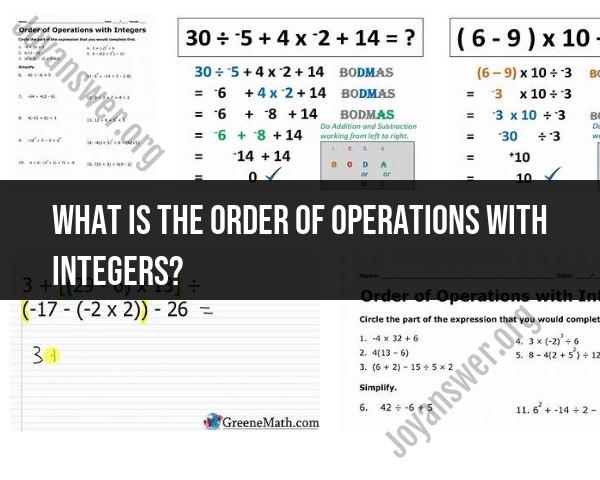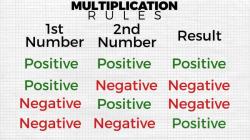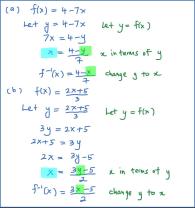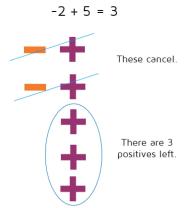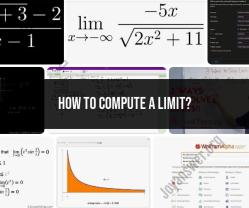What is the Order of operations with integers?
The order of operations with integers, often abbreviated as PEMDAS, is a set of rules that dictate the sequence in which mathematical operations should be performed in a given expression. These rules ensure that expressions are evaluated consistently and correctly. The order of operations is as follows:
Parentheses: Evaluate expressions inside parentheses first. If there are nested parentheses, work from the innermost set outward.
Exponents: Compute any exponentiation (raising a number to a power). This includes both positive and negative exponents.
Multiplication and Division (from left to right): Perform multiplication and division from left to right. These operations have equal precedence, so they are executed in the order they appear in the expression.
Addition and Subtraction (from left to right): Perform addition and subtraction from left to right. Like multiplication and division, these operations have equal precedence and are executed in the order they appear in the expression.
Here's a simple example to illustrate the order of operations with integers:
Expression: 2 + 3 * (4 - 1)²
- Evaluate the expression inside the parentheses: 2 + 3 * (3)²
- Compute the exponent: 2 + 3 * 9
- Perform multiplication: 2 + 27
- Finally, do the addition: 29
So, the result of the expression is 29.
Following the order of operations is essential to ensure that mathematical expressions are evaluated correctly and consistently. If you deviate from these rules, you may get incorrect results.
Understanding the order of operations with integers in mathematics
The order of operations is a set of rules that determine the order in which mathematical expressions are evaluated. This is important because different orders of operations can lead to different results.
The order of operations for integers is as follows:
- Parentheses
- Exponents
- Multiplication and Division (from left to right)
- Addition and Subtraction (from left to right)
Examples:
- Parentheses: (2 + 3) * 4 = 5 * 4 = 20
- Exponents: 2^3 = 2 * 2 * 2 = 8
- Multiplication and Division: 20 * 4 / 2 = 80 / 2 = 40
- Addition and Subtraction: 20 + 4 - 2 = 24 - 2 = 22
Step-by-step instructions for solving integer expressions following the order of operations
To solve integer expressions following the order of operations, follow these steps:
- Evaluate any expressions inside parentheses.
- Evaluate any exponents.
- Perform any multiplication and division from left to right.
- Perform any addition and subtraction from left to right.
Examples:
- 2 + (3 * 4) - 5 = 2 + 12 - 5 = 14 - 5 = 9
- 20^2 / (4 + 2) - 3 = 400 / 6 - 3 = 66.667 - 3 = 63.667
- (20 - 4) * (5 + 2) = 16 * 7 = 112
Real-world applications and problem-solving with integer operations
Integer operations are used in many real-world applications, such as:
- Calculating money: You can use integer operations to calculate your total expenses, your income, and your savings.
- Measuring ingredients: You can use integer operations to measure ingredients for recipes.
- Calculating distances: You can use integer operations to calculate distances between two places.
- Scheduling events: You can use integer operations to schedule events and determine how long each event will last.
Problem-solving:
Problem: A store has 20 apples and 10 oranges. How many fruits does the store have in total?
Solution: To solve this problem, we can use integer addition:
20 apples + 10 oranges = 30 fruits
Therefore, the store has 30 fruits in total.
Advanced examples and complex integer expressions in mathematics
More advanced examples of integer operations in mathematics include:
- Solving equations with integers: You can use integer operations to solve equations with integer variables.
- Working with fractions and decimals: You can use integer operations to work with fractions and decimals.
- Evaluating polynomial expressions: You can use integer operations to evaluate polynomial expressions.
Complex integer expressions in mathematics
Complex integer expressions are mathematical expressions that contain multiple operations and different types of numbers. For example, the following expression is a complex integer expression:
(20 - 4)^2 / (4 + 2) - 3
To evaluate this expression, we must follow the order of operations:
- Evaluate the expression inside the first parentheses: (20 - 4) = 16
- Evaluate the expression inside the second parentheses: (4 + 2) = 6
- Evaluate the exponent: 16^2 = 256
- Perform the division: 256 / 6 = 42.667
- Perform the subtraction: 42.667 - 3 = 39.667
Therefore, the value of the complex integer expression is 39.667.
Developing proficiency in handling integer operations through practice and understanding
The best way to develop proficiency in handling integer operations is through practice and understanding. You can practice by solving integer expressions, working on integer word problems, and playing integer games. You can also try to understand why the order of operations is important and how it works.
Here are some tips for developing proficiency in integer operations:
- Start with simple expressions and gradually work your way up to more complex ones.
- Use a calculator to check your answers.
- Ask for help from a teacher, tutor, or parent if you are struggling.
- Don't be afraid
